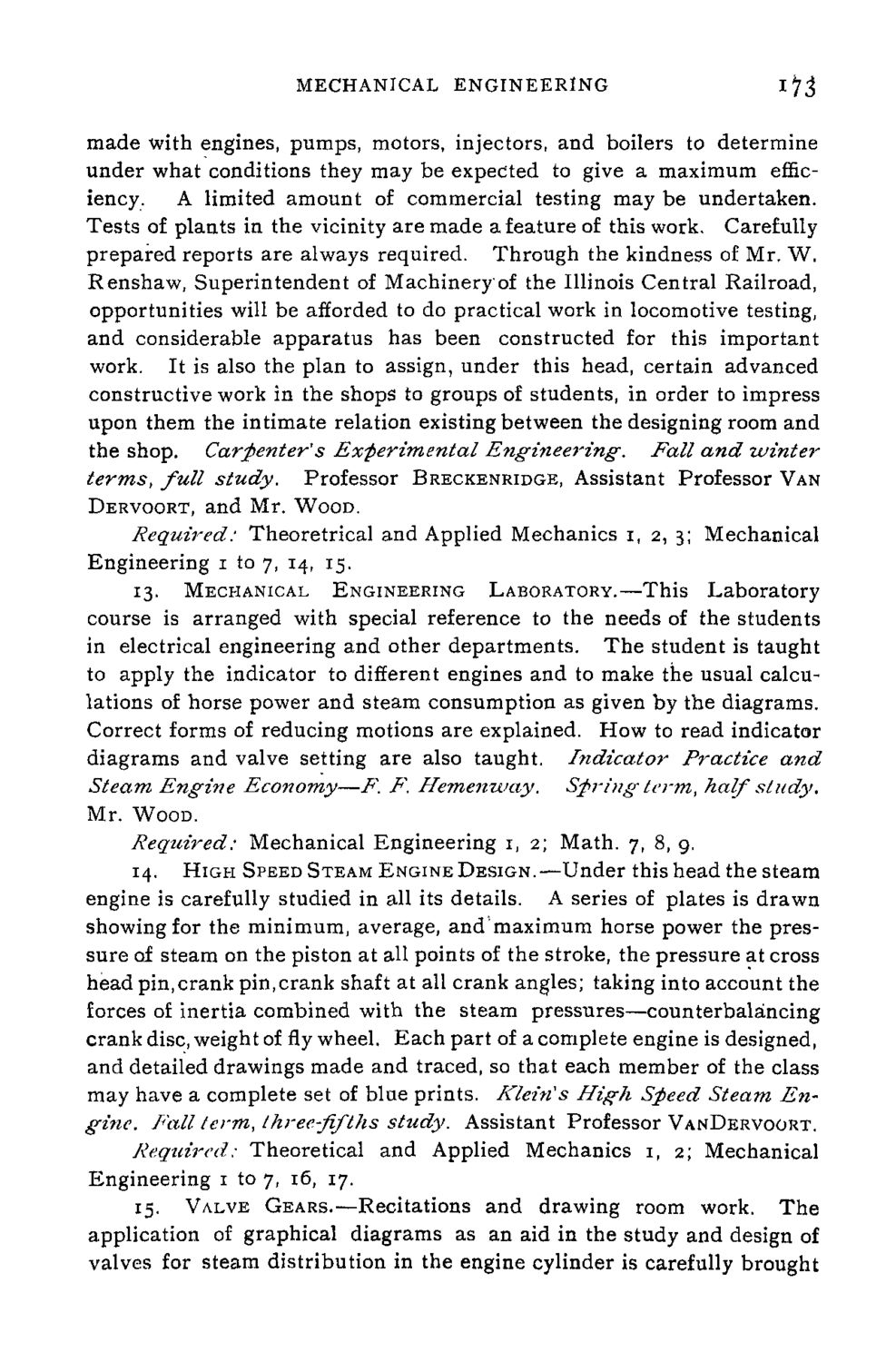| |
| |
Caption: Course Catalog - 1896-1897
This is a reduced-resolution page image for fast online browsing.

EXTRACTED TEXT FROM PAGE:
MECHANICAL ENGINEERING I^j made with engines, pumps, motors, injectors, and boilers to determine under what conditions they may be expected to give a maximum efficiency. A limited amount of commercial testing may be undertaken. Tests of plants in the vicinity are made a feature of this work. Carefully prepared reports are always required. Through the kindness of Mr. W. Renshaw, Superintendent of Machinery of the Illinois Central Railroad, opportunities will be afforded to do practical work in locomotive testing, and considerable apparatus has been constructed for this important work. It is also the plan to assign, under this head, certain advanced constructive work in the shops to groups of students, in order to impress upon them the intimate relation existing between the designing room and the shop. Carpenter's Exferimental Engineering. Fall and winter terms, full study. Professor BRECKENRIDGE, Assistant Professor VAN DERVOORT, and Mr. WOOD. Required: Theoretrical and Applied Mechanics i, 2, 3; Mechanical Engineering 1 to 7, 14, 15. 13. MECHANICAL ENGINEERING LABORATORY.—This Laboratory course is arranged with special reference to the needs of the students in electrical engineering and other departments. The student is taught to apply the indicator to different engines and to make the usual calculations of horse power and steam consumption as given by the diagrams. Correct forms of reducing motions are explained. How to read indicator diagrams and valve setting are also taught. Indicator Practice and Steam Engine Economy—F. F. Hemenzuay. Spring term, half study. Mr. WOOD. Required: 14. Mechanical Engineering 1, 2; Math. 7, 8, 9. HIGH SPEED STEAM ENGINE DESIGN.—Under this head the steam engine is carefully studied in all its details. A series of plates is drawn showing for the minimum, average, and maximum horse power the pressure of steam on the piston at all points of the stroke, the pressure at cross head pin,crank pin,crank shaft at all crank angles; taking into account the forces of inertia combined with the steam pressures—counterbalancing crank disc, weight offlywheel. Each part of a complete engine is designed, and detailed drawings made and traced, so that each member of the class may have a complete set of blue prints. Klein's High Speed Steam Engine. Fall term, three-fifths study. Assistant Professor VANDERVOORT. Required: Theoretical and Applied Mechanics 1, 2; Mechanical Engineering 1 to 7, 16, 17. 13. VALVE GEARS.—Recitations and drawing room work. The application of graphical diagrams as an aid in the study and design of valves for steam distribution in the engine cylinder is carefully brought
| |